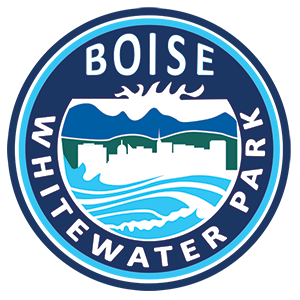Creating Perfect Wave: Idaho Engineers
Reprinted with permission from the Fall 2009 edition of the University of Idaho magazine "Here We Have Idaho"
Idaho Statesman outdoor writer Pete Zimowsky called it a "thundering mess of white water.” On a July 2008fishing trip, he wisely put his raft in downriver from the Boise River’s Thurman Mill diversion dam at 36th Street rather than above it. "That diversion is a nightmare,” he wrote. "There was a horrendous backwash of water …that would ‘Maytag’ any rafts or canoes that get in it.”
"Maytag,” explained Zimowsky, "is a term for a washing machine, meaning you’ll feel like you’re in one if you go into the diversion.”
At the University of Idaho Boise, fluid dynamicist Ralph Budwig and his students are helping to alleviate that danger and replace it with a large, low-hazard, adjustable wave that will both exhilarate recreationists and keep them alive to play another day. "They want a big wave but not a retentive one, so they don’t get stuck in a hole,” said Budwig.
That standout standing wave will be produced by McLaughlin Water Engineers’ Waveshaper™ – a quarter-scale model of which is the focus of a "designbuild-test” process inside the University’s Center for Ecohydraulics Research Stream Laboratory (CERSL) in Boise. As the College of Engineering team members record their observations, they relay valuable research information to McLaughlin for the prototype design. By late fall, construction will begin on the full-size structure in the river, where it will do double-duty for irrigation and a recreational diversion in the planned Ray Neef, M.D., River Recreation Park.
The quarter-acre park near downtown Boise was named for the late Boise surgeon Ray Neef, who died in a kayaking accident and whose parents have made the $1 million "anchor gift” toward this celebratory memorial to him. Eventually, an adjacent park will also encompass one to three lakes.
According to Budwig – who also serves as CERSL director – the laboratory’s $2 million glass-paneled research flume can simulate flow conditions in diverse river types, including the Boise River. About 66 feet long, seven feet wide, and four feet deep, it was developed to meet the modeling needs of water resource scientists and engineers.
Tom Governale, Boise’s superintendent of parks, expects the river recreation park to become a world class recreational site that will delight everyone from weekend anglers to competitive kayakers. The park also will raise all boats – economic, social and environmental. With its potential to generate $1 million-plus annually in economic benefits to the city, Governale envisions it as a place where sports enthusiasts will socialize, adults will teach kids how to paddle watercraft, wildlife watchers will wield their binoculars, and readers will nestle down with a good book. Making the river safer with a successful Waveshaper is key.
Thanks in no small part to fundraisers Friends of Parks, Governale expects Boiseans and their visitors to be playing in the new wave in spring 2010. The city is underwriting the flume-based modeling by Budwig and his team of students, mechanical engineering graduate students Jeff Schoenfelder of Boise and Naomi Sanders of Moscow, and Boise State University geosciences undergraduate Randy Westin.
In their applied research, Schoenfelder used an acoustic Doppler velocimeter – mounted on a student-designed instrumentation platform over the flume – which sends out sound waves that bounce off small particles carried by the water and measures how fast those particles are moving. Waterpark operators can amp up the wave and deliver a bodacious ride for competitive boaters, or they can "get rid of the wave entirely so that you can tube over it and not get ruffled up,” Schoenfelder said.
"With almost every project we do, we want to include students,” said Budwig. "I’m an educator – not just a consultant – and involving students is how we get work done. They’re the arms and legs that carry us through these projects – and a project like this is a great learning experience for them.”
Idaho alumni also have a hand in the project. Steve Clayton ’02 leads a team at CH2M HILL to develop a complex numerical and graphical model of the river reach in which the Waveshaper will operate – including the eddies from which boaters will enter and exit the waves. His team includes Gloria Beattie ‘03 and Joe Young ‘06.
Budwig, who bicycles to work past the river park site, said the "most fascinating” part of his flume-based modeling wasn’t technical: "It was casting my work toward what was important to the stakeholders – the kayakers, irrigators, design team, and parks and recreation people who came out to look at the design and tell us what they thought of the waves.”
